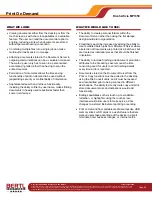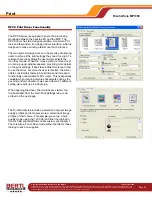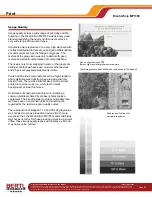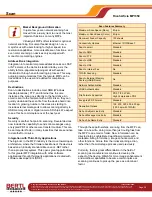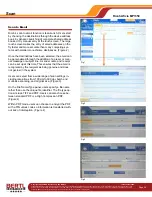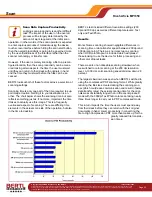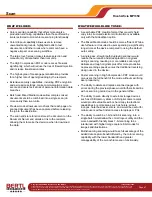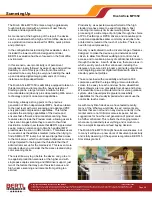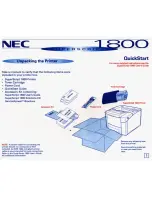
Copyright © 2006 MCA Internet, LLC dba BERTL.
13 November 2006
All Rights Reserved. The license under which this document is made available and applicable law prohibit any reproduction or further transmission of any portion of this document. This
document may only be viewed electronically through the www.BERTL.com Web site and may not be stored in electronic or hard copy format. Any reproduction of trademarks is strictly
prohibited. BERTL accepts no responsibility for any inaccuracies or omissions contained in this document.
Page 43
Ricoh Aficio MP1350
Scan Data Capture Productivity
Judging scan productivity is another difficult
task. The impact of the user on the overall
process will be largely determined by the
amount of work required at the initial scan
operation. In other words, if the scan operator is expected
to enter copious amounts of metadata using the device
touch screen interface before hitting the scan start button,
then the overall productivity is going to be governed more
by the user-friendliness of the interface rather than the
scanner technology or transfer rate.
However, if the user is merely scanning a file to a precon-
figured location, then the scan productivity can be meas-
ured looking at two aspects: the time the user must wait
until they can return to their desk with originals in hand
and the time they must wait before the files can be ac-
cessed.
BERTL looks at both of these factors across a selection of
scanning settings.
Scanning time is only one part of the time required to sup-
port image creation. Getting it to your destination is an-
other. The chart below shows the scanning time, but also
reflects something just as, if not more, important: the time
it takes to actually use this image. This is a frequently
overlooked aspect of scanning. There are differing time
elements in the actual scan side of the operation, but also
in the time to desktop.
BERTL’s test included different resolution settings (200
dpi and 300 dpi) as well as different capture levels: Text
only and Text/Photo.
Results
Monochrome scanning showed negligible differences in
scanning time or data transfer speed between 200 dpi and
300 dpi scanning. There was no impact upon scanning
when OCR color dropout is included which will please
those looking to use the device for forms processing and
other color dropout tasks.
There was also no noticeable scanning slowdown when
we switched to color scanning at the 200 dpi resolution
level. At 300 dpi, color scanning speed did slow down 28
percent.
The largest slowdown was seen when BERTL switched to
using the compressed PDF scanning format. While greatly
reducing the file sizes created during the scanning proc-
ess (which could ease communication and result in faster
data transfer rates) the actual scanning time for the origi-
nals was substantially longer than in the uncompressed
mode with the 300dpi Text/Photo color scan taking nearly
three times longer to carry out in PDF compressed mode.
This in turn impacts the time the users must spend away
from their desk before they can return with their original
documents in hand. Lower productivity in converting the
file to High Compression PDF more than makes up for the
greatly reduced file transmis-
sion times.
Scan

